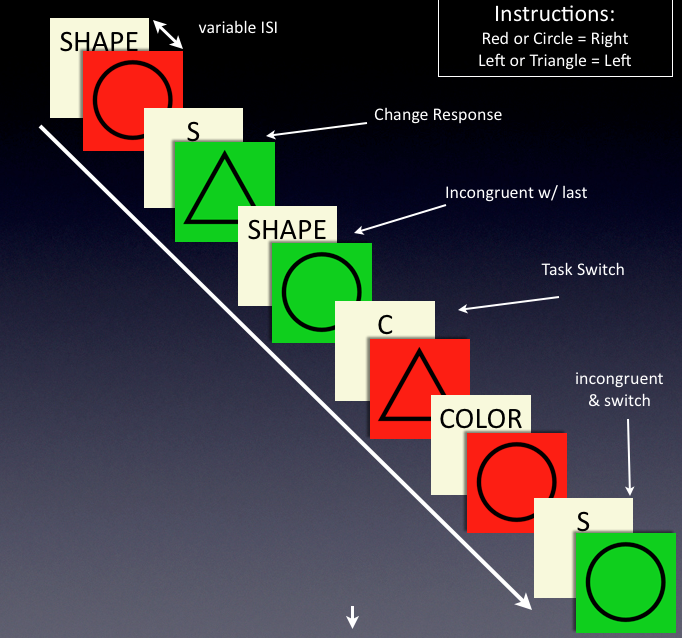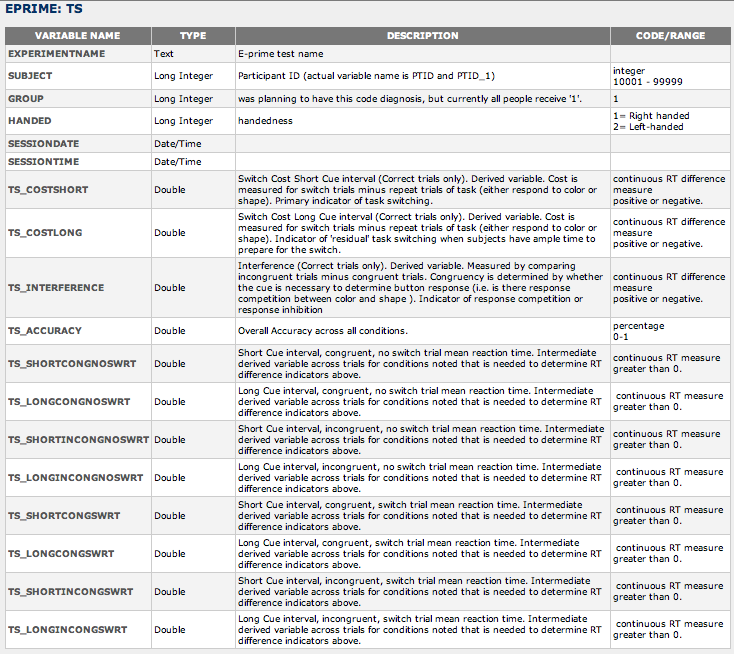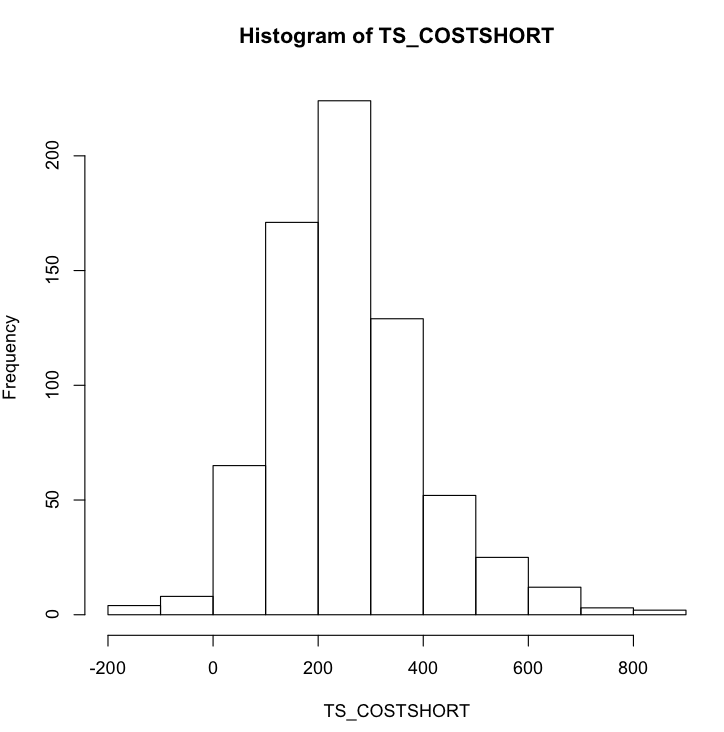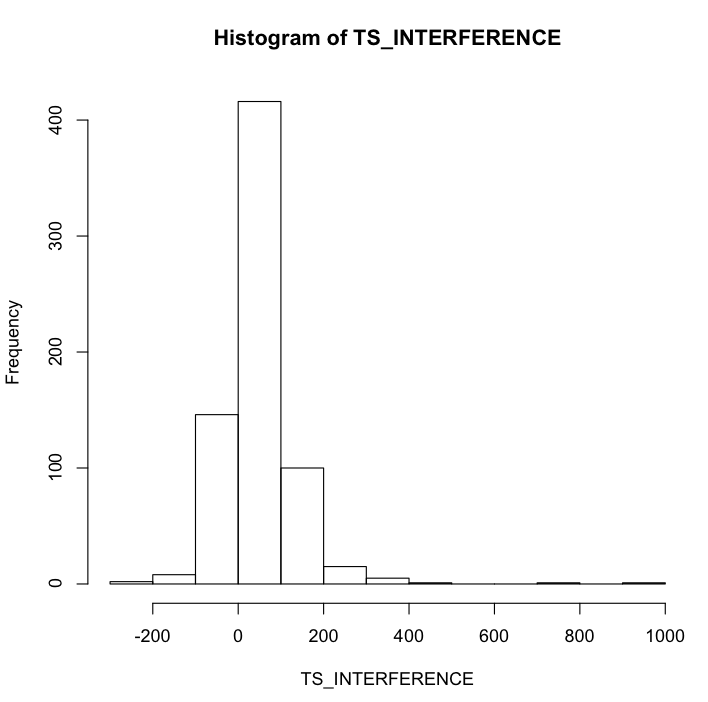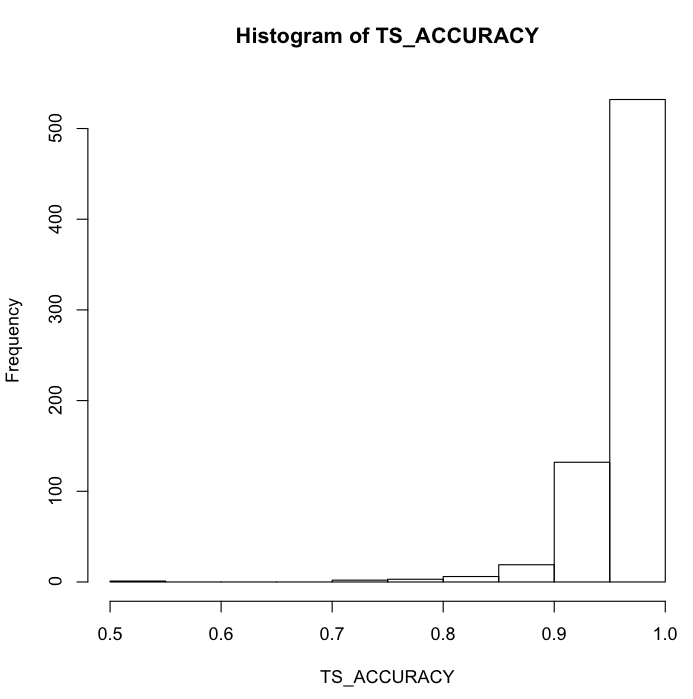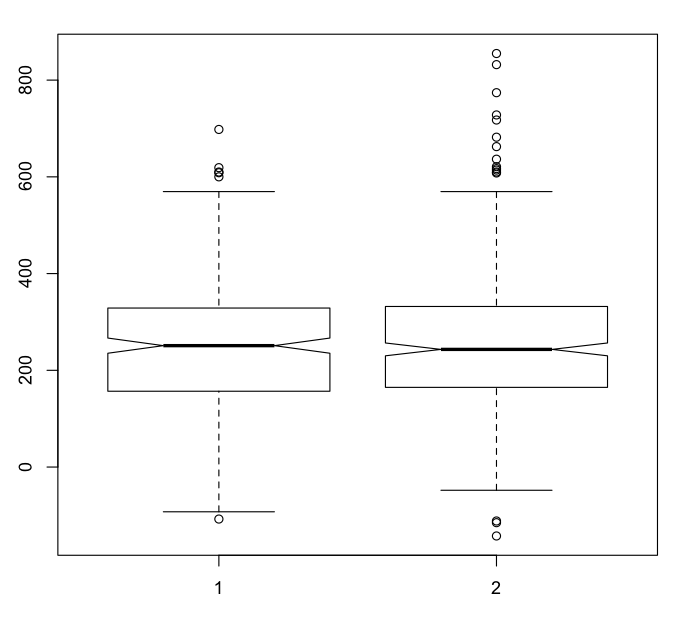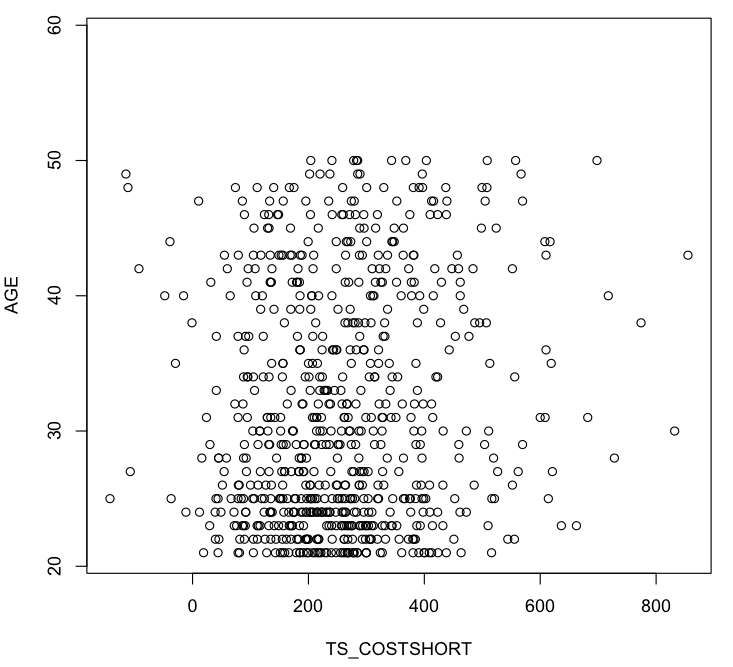Difference between revisions of "CNP TS"
(→Data Distributions) |
|||
| (31 intermediate revisions by 3 users not shown) | |||
| Line 1: | Line 1: | ||
go back to [[HTAC]] | go back to [[HTAC]] | ||
| + | |||
| + | ==CNP TS - Task Switching with the Color Shape task == | ||
=== Task Description=== | === Task Description=== | ||
| − | The Color/Shape cued switching task (C/S task) is a putative measure of task-switching | + | The Color/Shape cued switching task (C/S task) is a putative measure of task-switching based on Miyake (2004), Friedman 08(?). There are other variants of two dimensional simple switching tasks (e.g. letter-number (Ref), and spatial-number(meiran)) that all are based on around a similar premise. For good reviews of task switching, see Meiran (ref), Keisel 09 (ref), Monsell (ref), |
| − | + | ||
| − | + | Most agree that task switching is an important component of cognitive control (monsell, friedman, sabb). | |
| − | + | ||
| − | + | ||
| − | + | The two leading theories on the nature of the switch cost are that it is due to 'task set reconfiguration' or to 'priming'. These debates are on-going, with strong evidence on both sides, suggesting there are some situations in which each drives the switch cost effect. | |
| − | + | ||
| + | There has also been substantial research on the interference (what does meiran call it again) effect gained from having competing response mappings, similar to a stroop or perhaps a flanker task. | ||
| + | This particular variant has been used extensively in older adolescents and adults as part of the Colorado (twin/family) studies. | ||
| − | === Task Procedure === | + | === Task Procedure === |
For general testing procedure, please refer to LA2K General Testing Procedure [here?]. | For general testing procedure, please refer to LA2K General Testing Procedure [here?]. | ||
| + | The task was presented on a Dell PC running Windows XP and using E-prime (PST) for stimulus presentation. Stimuli were four colored shapes (red or green, circle or triangle). On each trial participants were cued (alternating with either a letter or word) as to which dimension is the correct task set. The cue duration was 150ms and the cue-stimulus interval (CSI) was randomized as either 200ms or 1200ms. Upon presentation of the stimulus (self-paced: stays on screen til response), the participant must make a forced-choice response with the middle or index finger of their dominant hand to the left or right arrow keys (inverted-t) on an extended keyboard. The response set was bivalent (e.g. respond left for green or triangle). This was counter-balanced across subject. Thus, two of the four stimuli presented a congruent response condition (the cue was not necessary to direct the response) and an incongruent response (where the cue is necessary to determine the correct response). On one third of the trials, the cue switched from one dimension to the other. Participants performed 192 trials. The task was self-paced. | ||
| + | Participants received three separate practice sessions to ensure encoding of the response mapping. They practiced each dimension separately for 8 trials (8 color only response trials, 8 shape trials). They then practiced both dimensions together with X switch trials. If participants performed below 60% on any block they repeated practice. If they performed below 60% on the second practice block, the task terminated. | ||
=== Task Structure Detail === | === Task Structure Detail === | ||
| − | |||
| − | * Task Structure ''( | + | * Task Structure ''(overview of the task procedures [i.e., overall design, block, trial, and within-trial event structure and timing])'' |
| − | ** The | + | ** The C/S Task has condition by condition instructions and practice with performance criterion, followed by 192 experimental trials |
| − | *** | + | *** '''Instructions/Practice:''' Screens are advanced with a right mouse click from the examiner. |
| − | **** 1. | + | **** 1. Basic task description. This includes a note to the examiner on which response mapping cheat sheet (a.k.a. GroupProc) to use. |
| − | **** 2. | + | **** 2. Instructions & Practice for Color (6 trials) |
| − | **** 3. | + | **** 3. Instructions & Practice for Shape (6 trials) |
| − | **** 4. | + | **** 4. Instructions & Practice for Both Together (6 Trials) |
| − | **** 5. Reiteration | + | **** 5. Reiteration or repeat if participants didnt achieve 60% |
| − | + | *** '''Experimental trials (192 trials)'''. | |
| − | *** Experimental trials ( | + | **** Cue. Alternating between word and letter for which dimension is relevant for response. |
| − | **** | + | **** CSI - Cue stimulus interval. Either 200 or 1200 ms. |
| − | **** | + | **** Stimulus. One two shapes (Triangle,Circle) of two colors (Green,Red). From a stimulus list |
| − | **** | + | **** RCI - Response Cue interval. Either 1600 or 600ms (for total duration of 1800ms of time with the CSI). |
| − | + | **** End Trial. | |
| − | **** | + | *** End Experiment. Thank you screen presented. |
| − | **** | + | |
| − | + | ||
| − | *** End. Thank you screen presented. | + | |
** Timing | ** Timing | ||
| − | *** | + | *** Instructions screens are static until advanced by examiner with a right mouse click. |
| − | *** | + | *** Practice: Same as experiment |
| − | *** | + | *** Experiment: Cue (on for the duration of CSI and Stimulus interval). |
| − | *** | + | *** Experiment: Cue-Stimulus Interval (200 or 1200 ms). |
| − | *** | + | *** Experiment: Stimulus (self-paced). |
| + | *** Experiment: Response Cue Interval (1600ms or 600ms) | ||
*** The ending thank you screen is static until advanced by the examiner with right mouse click. | *** The ending thank you screen is static until advanced by the examiner with right mouse click. | ||
* Stimulus Characteristics | * Stimulus Characteristics | ||
| − | **sensory modality: Visual. | + | **sensory modality: Visual. Stimuli are four images: Green Triangle, Green Circle, Red Circle, Red Triangle |
**functional modality: visuoperceptual and linguistic (understanding of text). | **functional modality: visuoperceptual and linguistic (understanding of text). | ||
**presentation modality: computer display, no audio, directions are assisted by examiner. | **presentation modality: computer display, no audio, directions are assisted by examiner. | ||
* Response Characteristics | * Response Characteristics | ||
| − | **responses required: | + | **responses required: yes |
| − | ***effector modality: Manual | + | ***effector modality: Manual keyboard press. |
| − | ***functional modality: Manual | + | ***functional modality: Manual keyboard press. |
| − | **response options | + | **response options: left or right arrow-key press (response mapping counterbalanced across subject) |
| − | **response collection | + | **response collection: keyboard press and recording of responses in Eprime 2.0. |
=== Task Schematic === | === Task Schematic === | ||
| − | + | [[Image:ts_schema.png | thumb | Task schematic | 300px]] | |
| − | === | + | Schematic with sample stimuli to the right. Stimuli ordering are for demonstration only and not necessarily in the actual experiment. On every trial there is a cue that alternates between the letter and the name of the dimension to attend to (following logan & bundeson's criticism of cued-task switching 2004?). The stimuli are one of two shapes in one of two colors (see below). Participants make a forced choice decision for left or right arrows based on instructions at the beginning of the experiment. This response mapping is varied across subjects in the following manner: |
| + | #TS1 = Order 1 = Red and Triangle respond left | ||
| + | #TS2 = Order 2 = Red and Circle respond left | ||
| + | #TS3= Order 3= Green and Triangle respond left | ||
| + | #TS4= Order 4= Green and Circle respond left | ||
| − | |||
=== Stimuli === | === Stimuli === | ||
| − | + | Four images below: Green or Red colors and Circle or Triangle shape adapted from Naomi Friedman's work. Includes their file names... | |
| + | |||
| + | [[image:ts_stims.png | thumb| 400px |center]] | ||
| + | |||
| + | |||
| − | |||
=== Dependent Variables === | === Dependent Variables === | ||
| + | There are three conditional variables most frequently analyzed in this C/S task: | ||
| + | #Cue-stimulus interval, long or short task preparation interval of 1200 or 200 ms; | ||
| + | #Congruency, whether the two dimensions of the stimulus created conflict in response; | ||
| + | #Switch condition, whether the previous trial was of the same dimension as the current trial (color or shape); | ||
| + | we additionally are going to look at a 4th that isnt quite as frequently analyzed | ||
| + | #Response choice, whether the response choice was the left or right button. | ||
| + | |||
| + | Text descriptions of the dependent variable calulations: | ||
| + | |||
| + | We used these variables to identify several task indicators of behavioral performance. As commonly seen in the literature, we defined switch cost as the difference in reaction time (RT) between repeat trials and switch trials at the short CSI. Residual switch cost was the same RT difference at the long CSI. We defined interference as the difference in reaction time between congruent and incongruent response sets. We also defined response switch as the difference in RT between repeated button presses and switching from one button to the other. | ||
| + | |||
| + | |||
| + | single line variables from the codebook are below to the right. The primary indicator is switch cost at the short CSI, presenting the largest switch cost (typically around 200ms). | ||
| + | |||
| + | [[Image:ts_single_codebook.png | thumb | Codebook variables | 600px]] | ||
=== Cleaning Rules === | === Cleaning Rules === | ||
| + | Most task switching experiments use correct only trials including removing switch trials where there was an error at trial n-1 (refs). Additionally, Friedman recommends trimming the data to 3 standard deviations. | ||
=== Code/Algorithms === | === Code/Algorithms === | ||
| + | Fred's R code [[TS_R_fws |coming soon]] | ||
| − | + | Stone's ASP code coming soon. | |
| − | History of Checking Scoring: | + | === History of Checking Scoring: === |
| − | * | + | * Fred Sabb independently checked Stone’s results in 2009 and 2010 and found his results to be accurate. |
| − | * In | + | * In July 2011, Fred Sabb cleaned the data, and created this document |
| + | * In July 2012, EC added TRIALCOUNT variable to TS data, which reflects the total number of task trials (excluding practice trials) that each subject completed. Can be used to flag subjects for exclusion. | ||
=== Data Distributions === | === Data Distributions === | ||
| + | *Performance on key behavioral indicators used in cued-switching paradigms that was consistent with the literature. | ||
| + | *Average reaction time of 813 ms and overall accuracy of 96.5% across all conditions. | ||
| + | *Subjects had an average switch cost of 216ms for the short cue-stimulus interval (CSI) when using correct only trials for analysis. | ||
| + | *They also had a residual switch cost (at long CSI) of 64.5 ms again using only correct trials. | ||
| + | *They showed significant interference with ambiguous stimuli (requiring the cue to determine the direction of response) at both short (46ms) and long (35ms) CSIs. | ||
| + | *696 of the first 1000 have full datasets. | ||
| + | * Full run is 192 trials | ||
| + | * The following people had odd trial counts (at data download from 7/19/11 - Query 109): | ||
| + | ##10448 - 384 trials | ||
| + | ##10471 - 341 trials | ||
| + | ##10474 - 235 trials | ||
| + | ##10476 - 205 trials (potentially just extra practice?) | ||
| + | ##10512 - 384 trials | ||
| + | ##10519 - 384 trials | ||
| + | ##10537 - 384 trials | ||
| + | ##10545 - 272 trials | ||
| + | ##10610 - 219 trials | ||
| + | ##10672 - 373 trials | ||
| + | ##10684 - 274 trials | ||
| + | * Update 8/2/12: Based on new TRIALCOUNT variable, all subjects completed 192 task trials. | ||
| + | |||
| + | Histograms of primary dependent measures | ||
| + | <gallery widths=400 heights=400> | ||
| + | Image:ts_single_shortcost.png | Histogram of Primary Indicator: Switch Cost Short CSI | ||
| + | Image:ts_single_interference.png | Histogram of Secondary Indicator: Incongruent mapping minus congruent mapping | ||
| + | Image:ts_single_accuracy.png | Histogram of Overall Accuracy | ||
| + | </gallery> | ||
| + | |||
| + | Boxplots of indicators versus demographic characteristics | ||
| + | <gallery widths=400 heights=400> | ||
| + | Image:ts_single_ethnicity.png | Comparison of Switch Cost by Ethnicity (Hispanic =1) | ||
| + | Image:ts_single_scanned.png | Comparison of Switch Cost in those scanned (LA5CCONTROL) vs. not | ||
| + | Image:ts_single_age.png | Scatter plot of Switch Cost by Age | ||
| + | </gallery> | ||
=== References === | === References === | ||
| + | |||
| + | # Miyake et al 2004 - PMID 14962397 | ||
| + | # Friedman et al 2008 - PMID 18473654 | ||
| + | # Meiran | ||
| + | # Kiesel et al 2008 - PMID 20804238 | ||
| + | # Sabb et al 08 - PMID 18180765 | ||
Latest revision as of 16:22, 2 August 2012
go back to HTAC
Contents
CNP TS - Task Switching with the Color Shape task
Task Description
The Color/Shape cued switching task (C/S task) is a putative measure of task-switching based on Miyake (2004), Friedman 08(?). There are other variants of two dimensional simple switching tasks (e.g. letter-number (Ref), and spatial-number(meiran)) that all are based on around a similar premise. For good reviews of task switching, see Meiran (ref), Keisel 09 (ref), Monsell (ref),
Most agree that task switching is an important component of cognitive control (monsell, friedman, sabb).
The two leading theories on the nature of the switch cost are that it is due to 'task set reconfiguration' or to 'priming'. These debates are on-going, with strong evidence on both sides, suggesting there are some situations in which each drives the switch cost effect.
There has also been substantial research on the interference (what does meiran call it again) effect gained from having competing response mappings, similar to a stroop or perhaps a flanker task.
This particular variant has been used extensively in older adolescents and adults as part of the Colorado (twin/family) studies.
Task Procedure
For general testing procedure, please refer to LA2K General Testing Procedure [here?].
The task was presented on a Dell PC running Windows XP and using E-prime (PST) for stimulus presentation. Stimuli were four colored shapes (red or green, circle or triangle). On each trial participants were cued (alternating with either a letter or word) as to which dimension is the correct task set. The cue duration was 150ms and the cue-stimulus interval (CSI) was randomized as either 200ms or 1200ms. Upon presentation of the stimulus (self-paced: stays on screen til response), the participant must make a forced-choice response with the middle or index finger of their dominant hand to the left or right arrow keys (inverted-t) on an extended keyboard. The response set was bivalent (e.g. respond left for green or triangle). This was counter-balanced across subject. Thus, two of the four stimuli presented a congruent response condition (the cue was not necessary to direct the response) and an incongruent response (where the cue is necessary to determine the correct response). On one third of the trials, the cue switched from one dimension to the other. Participants performed 192 trials. The task was self-paced. Participants received three separate practice sessions to ensure encoding of the response mapping. They practiced each dimension separately for 8 trials (8 color only response trials, 8 shape trials). They then practiced both dimensions together with X switch trials. If participants performed below 60% on any block they repeated practice. If they performed below 60% on the second practice block, the task terminated.
Task Structure Detail
- Task Structure (overview of the task procedures [i.e., overall design, block, trial, and within-trial event structure and timing])
- The C/S Task has condition by condition instructions and practice with performance criterion, followed by 192 experimental trials
- Instructions/Practice: Screens are advanced with a right mouse click from the examiner.
- 1. Basic task description. This includes a note to the examiner on which response mapping cheat sheet (a.k.a. GroupProc) to use.
- 2. Instructions & Practice for Color (6 trials)
- 3. Instructions & Practice for Shape (6 trials)
- 4. Instructions & Practice for Both Together (6 Trials)
- 5. Reiteration or repeat if participants didnt achieve 60%
- Experimental trials (192 trials).
- Cue. Alternating between word and letter for which dimension is relevant for response.
- CSI - Cue stimulus interval. Either 200 or 1200 ms.
- Stimulus. One two shapes (Triangle,Circle) of two colors (Green,Red). From a stimulus list
- RCI - Response Cue interval. Either 1600 or 600ms (for total duration of 1800ms of time with the CSI).
- End Trial.
- End Experiment. Thank you screen presented.
- Instructions/Practice: Screens are advanced with a right mouse click from the examiner.
- Timing
- Instructions screens are static until advanced by examiner with a right mouse click.
- Practice: Same as experiment
- Experiment: Cue (on for the duration of CSI and Stimulus interval).
- Experiment: Cue-Stimulus Interval (200 or 1200 ms).
- Experiment: Stimulus (self-paced).
- Experiment: Response Cue Interval (1600ms or 600ms)
- The ending thank you screen is static until advanced by the examiner with right mouse click.
- The C/S Task has condition by condition instructions and practice with performance criterion, followed by 192 experimental trials
- Stimulus Characteristics
- sensory modality: Visual. Stimuli are four images: Green Triangle, Green Circle, Red Circle, Red Triangle
- functional modality: visuoperceptual and linguistic (understanding of text).
- presentation modality: computer display, no audio, directions are assisted by examiner.
- Response Characteristics
- responses required: yes
- effector modality: Manual keyboard press.
- functional modality: Manual keyboard press.
- response options: left or right arrow-key press (response mapping counterbalanced across subject)
- response collection: keyboard press and recording of responses in Eprime 2.0.
- responses required: yes
Task Schematic
Schematic with sample stimuli to the right. Stimuli ordering are for demonstration only and not necessarily in the actual experiment. On every trial there is a cue that alternates between the letter and the name of the dimension to attend to (following logan & bundeson's criticism of cued-task switching 2004?). The stimuli are one of two shapes in one of two colors (see below). Participants make a forced choice decision for left or right arrows based on instructions at the beginning of the experiment. This response mapping is varied across subjects in the following manner:
- TS1 = Order 1 = Red and Triangle respond left
- TS2 = Order 2 = Red and Circle respond left
- TS3= Order 3= Green and Triangle respond left
- TS4= Order 4= Green and Circle respond left
Stimuli
Four images below: Green or Red colors and Circle or Triangle shape adapted from Naomi Friedman's work. Includes their file names...
Dependent Variables
There are three conditional variables most frequently analyzed in this C/S task:
- Cue-stimulus interval, long or short task preparation interval of 1200 or 200 ms;
- Congruency, whether the two dimensions of the stimulus created conflict in response;
- Switch condition, whether the previous trial was of the same dimension as the current trial (color or shape);
we additionally are going to look at a 4th that isnt quite as frequently analyzed
- Response choice, whether the response choice was the left or right button.
Text descriptions of the dependent variable calulations:
We used these variables to identify several task indicators of behavioral performance. As commonly seen in the literature, we defined switch cost as the difference in reaction time (RT) between repeat trials and switch trials at the short CSI. Residual switch cost was the same RT difference at the long CSI. We defined interference as the difference in reaction time between congruent and incongruent response sets. We also defined response switch as the difference in RT between repeated button presses and switching from one button to the other.
single line variables from the codebook are below to the right. The primary indicator is switch cost at the short CSI, presenting the largest switch cost (typically around 200ms).
Cleaning Rules
Most task switching experiments use correct only trials including removing switch trials where there was an error at trial n-1 (refs). Additionally, Friedman recommends trimming the data to 3 standard deviations.
Code/Algorithms
Fred's R code coming soon
Stone's ASP code coming soon.
History of Checking Scoring:
- Fred Sabb independently checked Stone’s results in 2009 and 2010 and found his results to be accurate.
- In July 2011, Fred Sabb cleaned the data, and created this document
- In July 2012, EC added TRIALCOUNT variable to TS data, which reflects the total number of task trials (excluding practice trials) that each subject completed. Can be used to flag subjects for exclusion.
Data Distributions
- Performance on key behavioral indicators used in cued-switching paradigms that was consistent with the literature.
- Average reaction time of 813 ms and overall accuracy of 96.5% across all conditions.
- Subjects had an average switch cost of 216ms for the short cue-stimulus interval (CSI) when using correct only trials for analysis.
- They also had a residual switch cost (at long CSI) of 64.5 ms again using only correct trials.
- They showed significant interference with ambiguous stimuli (requiring the cue to determine the direction of response) at both short (46ms) and long (35ms) CSIs.
- 696 of the first 1000 have full datasets.
- Full run is 192 trials
- The following people had odd trial counts (at data download from 7/19/11 - Query 109):
- 10448 - 384 trials
- 10471 - 341 trials
- 10474 - 235 trials
- 10476 - 205 trials (potentially just extra practice?)
- 10512 - 384 trials
- 10519 - 384 trials
- 10537 - 384 trials
- 10545 - 272 trials
- 10610 - 219 trials
- 10672 - 373 trials
- 10684 - 274 trials
- Update 8/2/12: Based on new TRIALCOUNT variable, all subjects completed 192 task trials.
Histograms of primary dependent measures
Boxplots of indicators versus demographic characteristics
References
- Miyake et al 2004 - PMID 14962397
- Friedman et al 2008 - PMID 18473654
- Meiran
- Kiesel et al 2008 - PMID 20804238
- Sabb et al 08 - PMID 18180765
